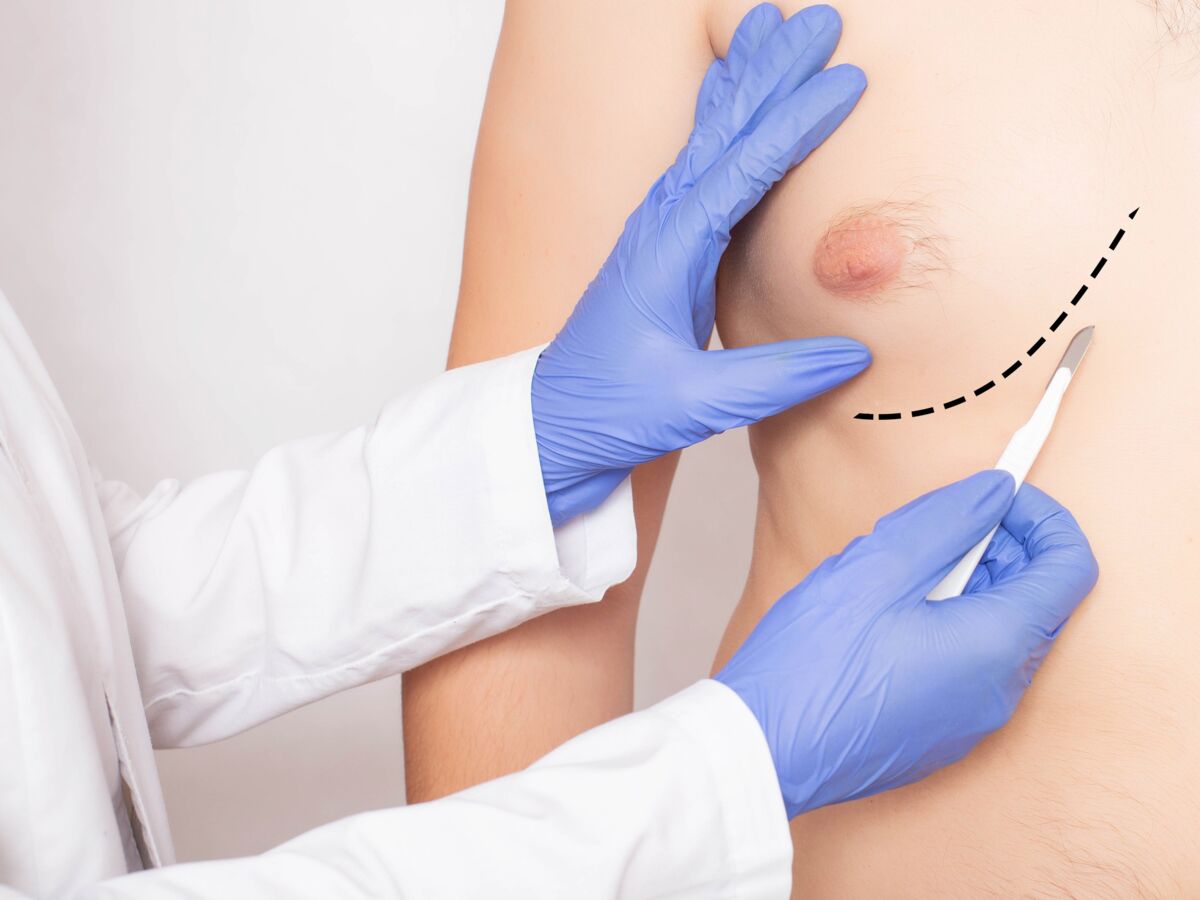Male breast enlargement is relatively common, and can be caused by multiple factors. Fortunately, various medical and surgical options can correct gynecomastia.
1. What is gynecomastia?
Gynecomastia is hypertrophy of glandular breast tissue in men. Although it may seem unusual, gynecomastia is a fairly common condition, affecting about a third of men, according to the University Hospitals of Geneva. The causes of gynecomastia can be multiple, including hormonal imbalances, the use of certain medications, genetic factors, or even underlying medical conditions. Men with this pathology commonly experience discomfort, even a loss of self-esteem. Fortunately, there are effective treatments available today that can reduce excess breast tissue and restore a more masculine appearance.
2. The causes of gynecomastia
As the MSD Manual states, gynecomastia can be physiological, idiopathic, pubertal, or drug-induced. Thus, among common causes of gynecomastiathere is a hormonal imbalance related to age, thyroid disorders, or the use of certain drugs such as anabolic steroids, anti-androgens or drugs against peptic ulcer disease.
Among the factors favoring gynecomastia, a genetic predisposition is frequently observed. Additionally, certain underlying medical conditions such as Klinefelter syndrome, kidney failure, or hyperthyroidism can also contribute to the onset of gynecomastia.
It is also important to note that enlargement of the mammary gland may be temporary in newborns and adolescents. This is because maternal hormones or hormonal changes related to puberty can cause a temporary increase in breast tissue.
3. Gynecomastia: who to consult?
When gynecomastia is suspected, it is necessary to consult a health professional in order to obtain an accurate diagnosis and appropriate recommendations. Several specialists may be involved in the treatment of gynecomastia, particularly endocrinologists, cosmetic and plastic surgeons, as well as general practitioners. Initially, it is recommended that you consult your primary care physician, who will be able to assess symptoms, perform a physical examination, and ask relevant questions about the patient’s medical history. Depending on the needs, the doctor can then refer the patient to an appropriate specialist, for further investigations or to discuss treatment options.
4. Diagnosis of gynecomastia
As the National Cancer Institute points out, diagnosis of gynecomastia is essentially based on a physical examination combined with precise questioning. The doctor will ask about the patient’s symptoms, medical history, medications taken, and lifestyle habits. The physical examination will check for the presence of excess breast tissue, assess the size, consistency, and symmetry of the breasts, as well as identify other associated signs or symptoms.
In some cases, additional tests are needed to determine the underlying cause of gynecomastia. This may include blood tests, as well as a breast ultrasound, mammogram, or biopsy, to rule out the presence of any breast tumors.
5. How to treat gynecomastia?
According to the French Society of Endocrinology, gynecomastia treatment varies depending on a variety of factors, such as the underlying cause, severity of the condition, and individual patient preferences. When gynecomastia is attributed to hormonal imbalances, medication may be prescribed to restore hormonal balance and reduce excess breast tissue. Medication options often include anti-estrogens, such as tamoxifen, which can help reduce breast tissue size. However, these drugs are not effective for all patients.
In more advanced cases, or when the enlargement is mostly glandular tissue, surgery may be considered. Liposuction is generally used when gynecomastia is mainly due to excess fat, while surgical excision is preferred when glandular tissue is predominant. This intervention reshapes the chest and restores a more masculine appearance.
Sources:
Geneva University Hospitals, MSD Manual, National Cancer Institute, SFE
Read also :
⋙ Endocrine disruptors: products at risk and how to protect yourself from them?
⋙ 7 hormones to watch to stay in shape
⋙ Fatigue, insomnia, menopause… My hormones are playing tricks on me!
